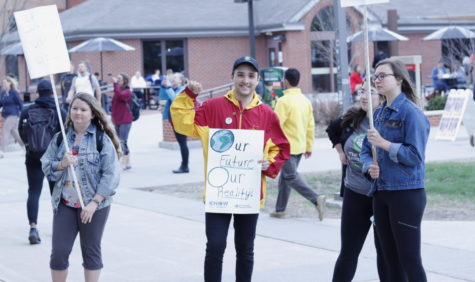City Council talks affordable housing, economic development
June 13, 2017
Here’s five other agenda items from this week’s city council meeting we think you should know about.
1. Economic Development Commission met goals
The Ames Economic Development Commission annual summary listed a year of development from Barilla, in the Technology sector and alongside Iowa State. John Deere has established a presence in the Research Park alongside such companies as Vermeer, said Dan Culhane, president of the Ames Chamber of Commerce.
“Once you get [to the Research Park], you realize, you see immediate credibility,” Culhane said.
Steven Schainker, city manager, said that previous estimates put government-owned land in Ames at 32 percent. Council member Tim Gartin congratulated Culhane and the development of private sector businesses. Culhane said those businesses then become corporate citizens, who impact the community through sponsorship of community programs such as Little League sports.
Orazem asked Culhane about the Chamber’s presence at a meeting in Des Moines on immigration. Culhane said he frequently engages with legislature to find a path for immigration, especially in a university town, to enter the workforce.
“We’re not talking about the border here, are we? We’re talking about people here on visas, on work visas, on student visas, we want them to stay,” Culhane said.
Mayer Ann Campbell said when she attended a trip to Washington D.C. with the Chamber where immigration came up the emphasis on employment possibilities in many sectors, particularly trade workforces, was something she found positive.
2. Second-guessing affordable housing plan
Unexpected costs on the proposal for a development that would include affordable housing gave the council pause.
Assuming the developer’s costs estimates are correct, there remains a gap of $400,000 to $558,000 between costs and what the city agreed to spend; the city’s request for proposal identified that the city would make the land available at no cost and provide a minimum of $392,000 and up to a total of $550,000 for public infrastructure depending on CDBG funding.
An alley and another route would need improvements under city regulation because they would become main roads to the development, which led to increased infrastructure cost estimates.
One way to combat that would be using cul-de-sacs instead of throughways, which would remove a public green space. That would decrease the number of lots and homes that could be built, however. Current numbers are 48 detached housing units consisting of 19 market homes and 29 affordable homes.
The market rate homes would be located south of Tripp Street and the affordable homes would be located north of Tripp Street under the current proposal. The affordable homes would be on small lots typically 45 feet wide and 4,000 square feet. The market rate lots would be a variety of sizes ranging from 6,600 square feet to 13,000 square feet, according to documents.
Options include changing from single-family to multi-family housing. There is a corresponding Franklin Park site as well that could be part of the equation.
Options included rejecting the proposal from the developer and returning to the proposal process while offering more financial assistance, asking the developer to adjust the proposal, phasing the building process to adjust costs or find alternate uses for the site.
Council member Tim Gartin asked if combining with groups like Habitat for Humanity to one-by-one build the affordable homes would absorb some of the costs. Concerns up-front costs, because it is a full development, would discourage Habitat from participating. Council member Peter Orazem said Habitat would be “doing it for 25 years” and that it would distract from programs to return rentals to homes Habitat focuses on.
The council ultimately decided staff should work with the developer to try to reduce costs.
3. Transportation improvements
Two amendments were approved during the transportation policy committee meeting prior to the regular council meeting; one amended the 2015-2019 transportation plan to include expanded federal funding. The second amended the 2017-2020 Transportation Improvement Program.
Dial-A-Ride Service, bus stop improvements and van replacement are included in the 2015-2019 transportation plan. Bus stop improvement include lighting improvements (or additions) and an LED screen to display information on the next bus.
4. Water fountain in water treatment plant
Approval of funding for a water feature at the Water Treatment Plant got some debate. Council Member Gloria Betcher was concerned if it was a responsible use of money. Council member Peter Orazem said the feature would act as art the council had wanted in the building anyway. Ultimately, the council approved the use of the funds from the Water Fund to pay for the fountain.
The budget for the new Water Treatment Plant included an allowance for a custom waterfall feature to be installed on the side of the two-story elevator shaft in the main lobby, according to the proposal.
5. 5K event to return
Midnight Madness will use the same course as last year and received council approval for proper permits. The event will by July 8.
















